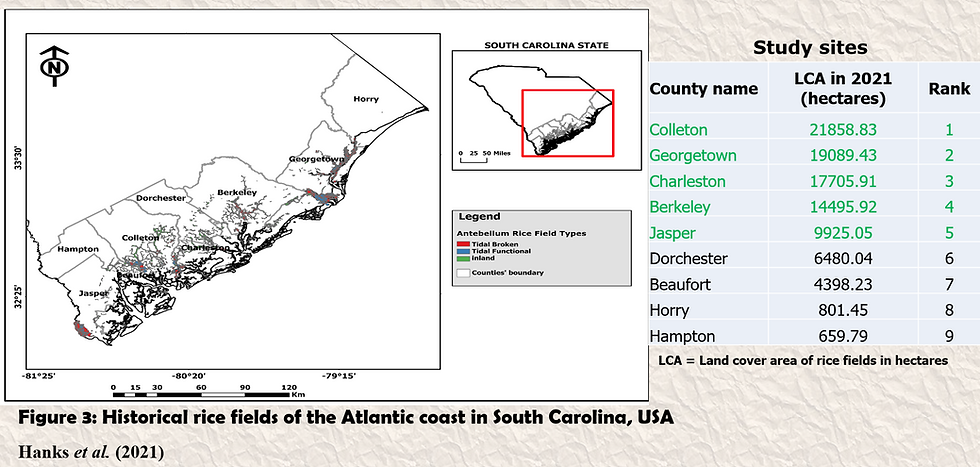Development of a Decision Support Tool for Managing Antebellum Rice Fields in South Carolina
Oluwatobi Emmanuel Olaniyi
Doctoral Student, Clemson University




Antebellum rice fields along South Carolina's coast, once key for rice farming, today provide critical habitat for bird species like warblers, shorebirds, and waterfowl. Planters used to maintain these fields for economic advantage, but they are now prized for their more comprehensive environmental benefits. With increasing sea levels threatening these places, there is an urgent need for novel management solutions that fulfill both ecological preservation and community needs. This study aims to develop a decision-support tool for managing these historic rice fields. It will involve collecting and integrating data on environmental and social aspects, assessing restoration methods, and creating a risk-benefit matrix profile to evaluate the impacts of various management actions.
This research uses a mixed-methods strategy that combines quantitative and qualitative methodologies to assess the restoration of antebellum rice fields. It uses geospatial analysis, field assessments, and socioeconomic evaluations to understand restoration results comprehensively. The Analytical Hierarchy Process (AHP) is used in the study to make multi-criteria decisions, which will aid in assessing numerous success variables and prioritizing restoration activities. The study engages a diverse group of stakeholders, including Gulla Geechee, the public, and plantation managers, focusing on ten restoration sites across key river basins. Data collection methods include GIS and remote sensing for tracking land use and cover changes, field-based ecological assessments, and socioeconomic surveys through questionnaires and focus group discussions. For data analysis, AHP will assist in evaluating and prioritizing success criteria, while geospatial analysis, machine learning models, generalized linear modeling, Bayesian Belief Networks, and Python libraries will be employed to conduct scenario analysis and develop risk-benefit matrix profiles and decision support tools.
The findings are expected to reveal the effectiveness of restoration efforts, focusing on key indicators such as ecological dominance, diversity, hydrological connectivity, and socioeconomic impacts. The study will also provide insights into the risks and benefits associated with ecological and societal factors. Also, the development of a decision support tool will facilitate informed management decisions by integrating various data and analysis scenarios. Results will be summarized in tables showing restoration success and socioeconomic impacts, and figures illustrating risk-benefit analyses and the decision support tool's interface.